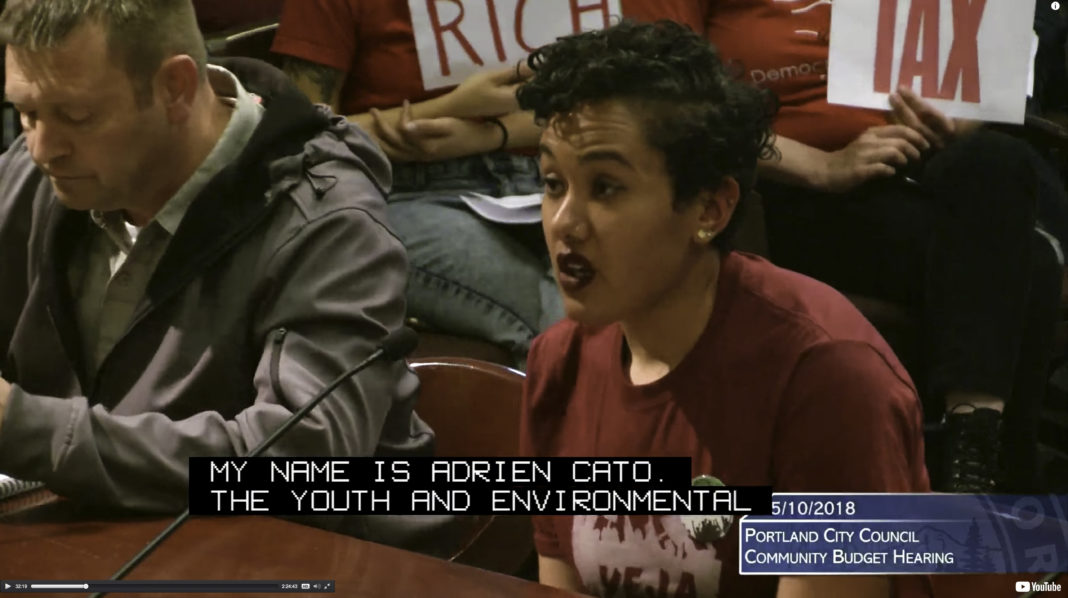On July 28, Superintendent of the Portland Public School District (PPS) Guadalupe Guerrero issued a letter which stated PPS will be completely online for the first quarter of the school year due to concerns surrounding COVID-19. This means nearly 50,000 students in PPS will be learning from home from September 2–November 5.
This letter came as a result of new requirements issued by Oregon Governor Kate Brown’s office. Brown called the decision to close schools “the most difficult decision during the [COVID-19] pandemic.”
These requirements set statistics that the state and individual counties will need to boast before reopening school. For instance, the entire state needs to have a weekly positivity rate of less than 5% for three weeks before schools can reopen. The latest percentage was 4.6%.
Some exceptions are being made for smaller rural schools, but ultimately these guidelines mean PPS school buildings will not be open.
Principal Sabrina Flameo of Vestal School, an elementary school in Northeast Portland, watched the governor’s press conference.
“It’s clear that there’s been a lot of thought and energy put into this decision, but it was hard to hear,” Flameo said.
Even though courses will be remote, they will not be conducted the way they were last spring when some students lacked even the ability to connect to the internet. “This model will be different from the student learning experience of this past spring,” Guerrero assured families.
According to Flameo, many students and families’ needs were not entirely met by remote learning last spring. “We learned from the spring time that we can do better,” she said.
Miriam Calderon, the Early Learning System director for the Oregon Department of Education, also spoke at the press conference. She underscored the needs of students Pre-K through third grade students.
Calderon stressed these students stand to lose the most during distance learning. “Deep learning such as reading requires a parent or trusted adult,” Calderon said. These basic skills, such as being in a group, standing in a line and raising hands, are difficult to learn over distance learning platforms.
“It really rang true to me that our youngest kids need a lot of early literacy, especially learning to read and also the whole idea of learning to be in groups,” Flameo said. “I loved one of the quotes from the press conference: ‘learning to pay attention on purpose’.”
The district announcement has garnered a multitude of reactions.
Many families felt students with disabilities as well as black, indigenous and students of color (BIPOC) faced special challenges last spring. These families anticipate continued challenges in the fall.
In a July 11 letter, Guerrero stressed the district was trying to meet the needs of such students.
“As we develop our reopening plans, our key considerations are how to best serve and support the academic learning and social emotional needs of every student, particularly students of color,” Guerrero stated. “We are also taking into account the differentiated needs of our students, including the specialized support required by our students with special needs.”
The district has yet to issue directives to schools to meet the needs of BIPOC students, forcing schools to come up with their own solutions.
“There’s a percentage of our kids that we know are going to need more support,” Guerrero stated. “And in this case, we are looking at our counselors and specialists—like PE teachers, librarians, and art teachers—that we’re hoping that we can use to do more home visits, in-person check-ins with social distancing, of course, and just more one on one meetings, either via phone or Zoom.”
“We’re trying to make connections so that there’ll be a certain percentage of kids that will be getting more adult check-ins throughout every week,” Guerrero stated.
According to Guerrero’s July 28 letter, the average student can expect to use the first two weeks “to connect with their teachers, become oriented to their learning platforms and participate in activities that support interconnectedness with their classroom and school communities.”
After the first two weeks, “students will follow a regular weekly schedule and will have daily interaction with their teachers. Grades will be given and attendance will be taken.”
Overall, the state, county and district emphasize they are committed to the health of students, staff, and the surrounding community.
Still, Flameo expressed frustration with the current plans for the upcoming school year. When asked what her worst case scenario was, she replied, “We’re living it.”




